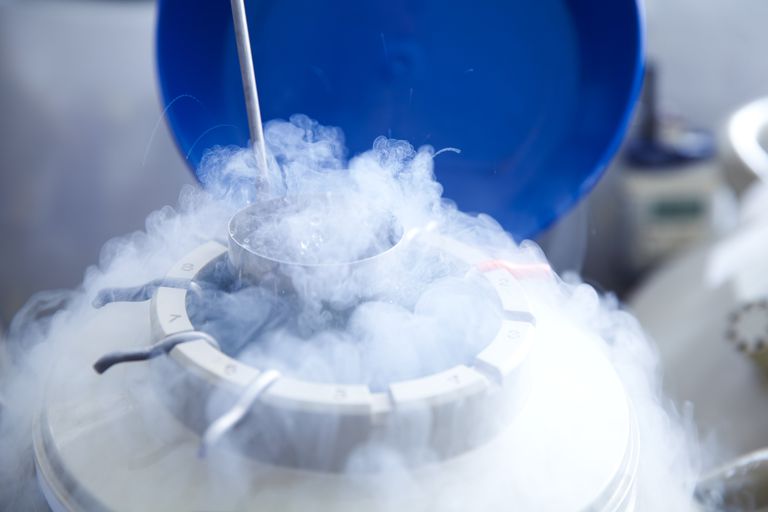
Embryo Freezing
An IVF cycle will hopefully produce a number of viable embryos. Those that aren't immediately transferred back to the patient are placed in cryostorage by lowering their temperature to that of liquid nitrogen (-196°C). At this temperature, embryos can be stored until they are needed for later transfer. This process is also used for IVF/ICSI on unfertilized eggs.
The problem with freezing any cell in the body is that the fluid inside the cells can form ice crystals that expand and damage the cell membranes. Enormous care must be taken to avoid this. In the past this has meant that eggs and embryos were frozen using a slow programmed decrease of temperature using expensive machinery.
Vitrification for the preservation of domestic animal embryos was developed several years ago.
Unlike previous slow freeze methods, which took up to two hours to lower the embryo to the correct temperature, vitrification takes just a few minutes. The embryo is suspended in a drop of fluid on a tool with a tiny hook on the end. The droplet is lowered onto a metal block that has been cooled by liquid nitrogen where it hardens into a "glassy" bead.
The problem with freezing any cell in the body is that the fluid inside the cells can form ice crystals that expand and damage the cell membranes. Enormous care must be taken to avoid this. In the past this has meant that eggs and embryos were frozen using a slow programmed decrease of temperature using expensive machinery.
Vitrification
Vitrification comes from the Latin word vitrum, meaning glass. In the context of freezing embryos, vitrification is the process whereby the solution containing the embryos is cooled so quickly that the structure of the water molecules doesn’t have time to form ice crystals and instantaneously solidifies into a glass-like structure.Vitrification for the preservation of domestic animal embryos was developed several years ago.
Unlike previous slow freeze methods, which took up to two hours to lower the embryo to the correct temperature, vitrification takes just a few minutes. The embryo is suspended in a drop of fluid on a tool with a tiny hook on the end. The droplet is lowered onto a metal block that has been cooled by liquid nitrogen where it hardens into a "glassy" bead.
